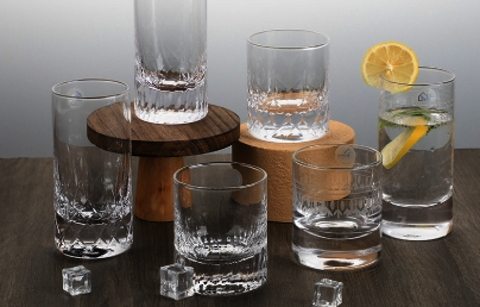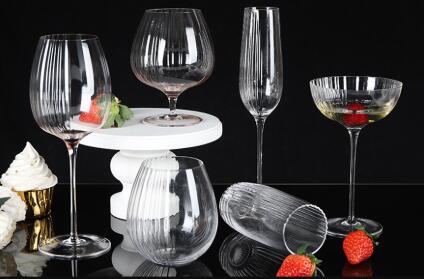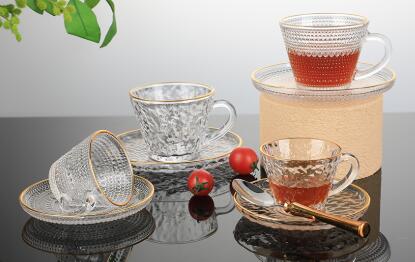Antique Carnival Glass
Pulished on Oct. 16, 2018
Carnival glass, or inexpensively made glassware treated to have an iridescent sheen, has captivated collectors for years. Its eye-catching multicolor shimmer, often resembling oil on water, seems to change colors when viewed at different angles. Over the years, it's been dubbed "Taffeta," "Cinderella," and "Poor Man's Tiffany," as it gave the average housewife the ability to adorn her home with fancy vases and decorative bowls.
In 1907, Fenton Glass Company of Williamston, West Virginia, produced the first carnival glass, a style it referred to as "iridescent ware." Fenton called its first line Iridill and labeled it "Venetian Art." The idea was to mass-produce a beautiful product that could compete with the expensive, iridescent art glass made by Tiffany and Steuben.
This new kind of glass did not catch on in the way brothers Frank and John Fenton had hoped, but other manufacturers followed in Fenton's footsteps, employing the same iridization techniques, also called doping. The process involved spraying a pressed glass piece with metallic salts when it was hot from the mold and then re-firing it. Even though carnival glass was made in molds, it was often hand-finished by artisans—those piece are more sought-after today.
In 1908, Harry Northwood's glass company introduced its own iridescent ware called "Golden Iris," which was known for its marigold color. Dugan and Imperial glass companies soon jumped on the bandwagon. Millersburg only produced carnival glass for two years, but today its version is considered some of the finest.
Since iridescent ware was so cheaply made, most consumers didn't see it as quality glass and refused to pay top dollar for it. As its value plummeted, iridescent ware was soon being given away as prizes a carnivals, where midway winners could go home with shimmering vases, pitchers, goblets, tureens, or candy bowls.
This new market for carnival glass was a boon for Fenton, which produced iridescent ware in 150 patterns up until the late 1920s. Carnival glass was sold for mere pennies at five-and-dimes, and it could be bought in lots at minimal cost. For this reason, it was also given away as promotions at movie theaters and in grocery stories. For example, Imperial struck lucrative deals with companies like Woolsworth's and Quaker Oats.
In total, there are around 2,000 different patterns of carnival glass. Fenton's earliest patterns included Waterlily and Cattails, Vintage, Butterfly and Berries, Peacock Tail, Ribbon Tie, Wreath of Roses, Thistle, and Diamond and Rib. Among Northwood's first iridized glass patterns were Waterlily and Cattails, Cherry and Cable, and Valentine, but Grape and Cable was their most popular. Millersburg collectors look for Hobstar and Feather, Blackberry Wreath, and Rays and Ribbons.
Dugan started out making carnival glass with molds they already had—vase patterns like Target and Wide Rib, Quill, Honeycomb, Jeweled Heart, Vineyard, and Pulled Loop—but soon they made patterns specifically for iridescent ware, like Farmyard, Christmas Compote, Heavy Iris, and Roundup.
With so much competition, glass companies distinguished themselves by developing their own unique carnival treatments. In most pieces of carnival glass, the main color of the piece was usually named for the base color before the glass was treated. Northwood’s marigold, which featured an orangish treatment on a clear base, was an exception to this rule. Northwood also developed distinctive carnival colors in amethyst, cobalt blue, and green, as well as in pastels, ice blue and ice green, and white.
Dugan, meanwhile, figured out how to create yet another brand of orange. The company began with a basic marigold spray, but it applied the color to glass made with bone ash, creating a peach opalescent color. Millersberg excelled in a particularly bright and shiny form of iridescent glass it called radium. Imperial made its mark with its purple and helios colors—the latter being a silvery treatment on greenish glass—as well as smoke, which was a gray treatment applied to clear glass. And Fenton was known for its vivid red, especially in the early '20s.
One early version of carnival glass known asVaseline or uranium glass was produced by spraying uranium salts on a piece. This was obviously well before manufacturers, let alone consumers, knew about the dangers of radioactivity. These pieces can be identified today by their green luminescence in UV light.
Cambridge, U.S. Glass, Westmoreland, Fostoria, Jenkins, McKee, and Higbee also produced their own versions of carnival glass, and it was manufactured all over the globe, in places like England, Scandinavia, Germany, Czechoslovakia, Australia, Argentina, and Mexico.
By 1925, carnival glass started to fall out of favor with Americans, and many U.S. glass companies quit producing it during the Great Depression. European glass makers continued to produce it until the 1940s. Sometime after World War II, this once-dismissed iridescent ware was dubbed carnival glass, and it became collectible.
Later in the 20th century, glass companies began to produce iridescent glass again, although these second-generation pieces do not interest collectors. The most sought-after carnival glass pieces are from the heyday of carnival glass, which was 1907-1930. Thus, collectors should be wary of these reproductions, which mimic the original carnival glass patterns and colors.
 Next:
Steuben Art Glass
Next:
Steuben Art Glass








